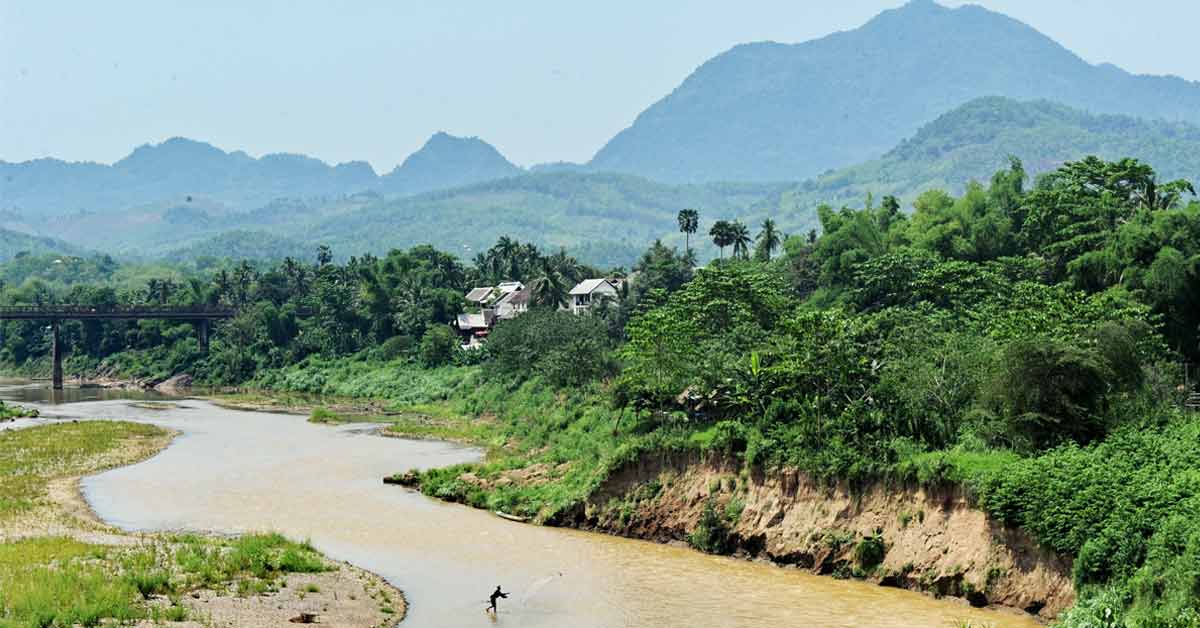A new Programme for the Endorsement of Forest Certification (PEFC)-For-Trade project, in collaboration with the United Nations (UN) Collaborative Programme on Reducing Emissions from Deforestation and forest Degradation (REDD+) Programme’s initiative for the Lower Mekong, will promote trade and sustainable forest management (SFM) and at the same time reduce pressure on forests through improved governance in Cambodia, Lao PDR, Myanmar, Thailand and Vietnam.
PEFC’s Forestry and Trade for Development in the ASEAN region aims to strengthen trade through improved forest certification infrastructure, supporting the reduction of trade barriers, promoting sustainable wood trade, improving livelihoods and contributing to biodiversity protection.
The UN-REDD Programme involves working with key institutions in these ASEAN countries, and in China, to reduce the opportunities for forest crime by strengthening governance, particularly by increasing the effectiveness of systems designed to ensure legal and sustainable trade in timber.
By strengthening forest governance, the UN-REDD Programme helps ensure that trading of wood products is legal and sustainable.
Aiming to reduce illegal logging and illegal conversion of forests, Sustainable Forest Trade (SFT) in the Lower Mekong Region (LMR) initiative seeks to reduce emissions from deforestation and degradation, while boosting sustainable forest management across the region.
Biodiversity Preservation And Livelihood Improvement
“The Lower Mekong region is one of the critical hotspots in need of biodiversity preservation and livelihood improvement," said Ben Gunneberg, CEO of PEFC International.
"I firmly believe that a strong forest governance and institutionalisation at regional and national levels to promote sustainable forest trade is a critical solution. The PEFC framework is proven to contribute to such a goal and we are calling for more of such support to deepen intra-regional cooperation."
"It's an excellent and timely opportunity to leverage the quality infrastructure of internationally recognised forest certification systems at the regional and national levels in the Lower Mekong region," added Michael Berger, Head of Technical Unit at PEFC International.
"We are looking forward to providing technical support and deepening intra-regional cooperation to improve regional certification infrastructure."
Mr Sakchai Unchittikul, Chairman of the Thailand Forest Certification Council (TFCC) noted that the project components corresponded well to Thailand’s critical need to strengthen national forest certification capacity to achieve international recognition, and that this was another useful activity in PEFC’s “tireless support of TFCC.”
He also said that TFCC was “ready to look for cooperative collaboration between project partners to deliver and go beyond the project’s expectations”.
Incredibly High Diversity Of Forest Habitats
The Lower Mekong basin is a globally important eco-region that encompasses an incredibly high diversity of forest habitats. These forests are home not only to diverse and rare wildlife but are also relied upon by many communities for essential products and services.
To reduce the pressure on this valuable natural resource, and to reduce deforestation and forest degradation in the region, the Government of Norway is collaborating with the UN-REDD Programme to implement this initiative to support countries in the Lower Mekong region (Cambodia, Lao PDR, Myanmar, Thailand and Vietnam).
Forest crime and the illegal exploitation of the world’s forests has transformed into one of the largest trans-national organised criminal activities, according to the United Nations Industrial Development Organization (UNIDO). With an annual worth of US$50-150 billion, crimes related to forests and wildlife are the fourth biggest crime sector after drugs, counterfeits and trafficking.
Combating forest crime is crucial to reduce forest degradation and subsequent deforestation, which can significantly affect carbon dioxide emissions.
There is an increasing trend of investments from the expanding economies of China, Thailand and Vietnam, to timber production and land intensive industries in the lower-income, higher forest cover countries of Cambodia, Lao PDR and Myanmar.
Given that the gap between global supply and demand of wood products is expected to widen significantly by 2050, growth in supply from the region is also predicted to increase, adding further pressure on already stressed forest resources.
Illegal logging and illegal forest conversion often stem from insecure land tenure, incomplete legal frameworks, or unclear management and enforcement responsibilities.
Boosting Transparency and Cooperation in Lower Mekong
The goal of this initiative is to improve governance, promote policy alignment and institutional inter-compatibility within the region, and boost transparency and cooperation between the Lower Mekong region countries and China.
Southeast Asia is home to the world’s third largest area of tropical rainforest, containing some of the richest and most valuable resources and habitats on earth. As well as an important source for timber production and rural employment for the region, these forests also have an important effect on watershed protection, biodiversity and the global carbon balance.
In addition to the natural forests, planted forests are also common throughout Southeast Asia. In many countries, it is plantation forests, both large and small-scale, as well as trees outside forests that contribute the most to productive forestry.
The PEFC explains that the SFT-LMR initiative is implemented by the Food and Agriculture Organization of the United Nations (FAO) and the United Nations Environment Programme (UNEP), with funding from the Government of Norway. Key outcomes include the development of national forest certification systems and related quality infrastructure mechanisms.
The PEFC framework will be used to deliver several outputs, which includes deepening intra-regional cooperation, strengthening national certification standards, and building national capacities in forest governance, sustainable forest management, and trade.
Related Articles:
